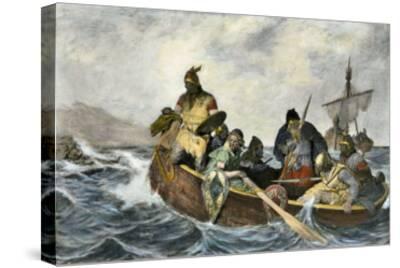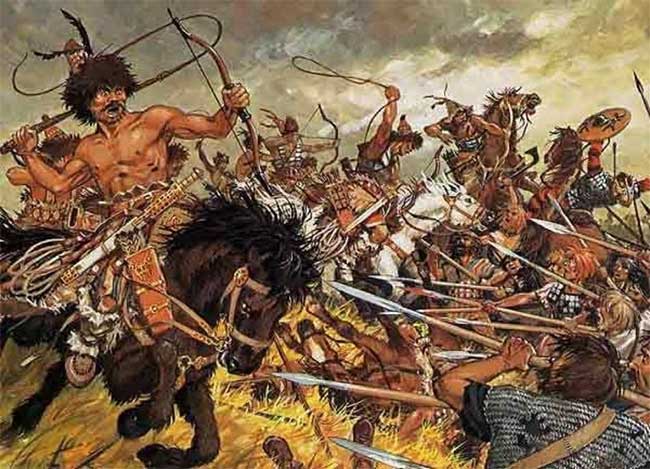(This is part of a series. The first post is here.)

Getting Started
Before you get going, erect your infrastructure.
What you need to have:
- Communications: You must have a central channel to communicate with all players and separate channels for specific subsets as well as individual players.
- Policies: You must have your core administrative policies and procedures set. Downtime actions are due by (X), play scheduling for the next session settled by (Y), information flow procedures, required tools (ruleset, accessories, applications (e.g. Discord), etc.)
- Archives: This is where your campaign map, campaign calendar, and campaign reports (for both Patron and PC actions) are put up for later reference.
This is fundamental to making your administration of the campaign a simple and painless process, as well as making participation easy for your players. Yes, it takes some effort upfront, but that pays dividends on the back end- easily for years and potentially for decades, depending on how your campaign goes.
As I said previously, have redundancies- and today that means offline backups, preferably in both hardcopy and local digital storage (USB stick, portable hard drive, etc.). You do not want a site crash, hijacking, etc. to completely screw up your campaign. Keep things synchronized.
As a side note, if you're not running a wholly private game then encourage your players to give their own campaign reports and let them post links to such on the campaign's general communications avenue (newsletter, Discord server chat channel, Blogroll on a campaign blog, etc.). Prospective players will see this as a form of social proof and be more inclined to follow along if not join in.
This need not be a tedious or complicated task; as Discord is a popular choice, you can find plenty of videos on YouTube about how to do it and adjust the specifics to your ruleset and circumstances.
Then, once that's set up, it's time to get going.

The Vangard Goes First
You do not launch everything all at once.
The first group of players to recruit are the Patrons. Depending on your campaign scenario, you need not have all of them on board yet to get started.
What you're going to do here is to bring this group on board. Once each player has their Patron, has the full array of information about that Patron's mission and resources, and knows where their initial Domain is and where they are to work towards, you can start Part One of the launch process.
Your campaign map is, if this is a new campaign setting, mostly blank; this launch process has the specific intent to uncover enough of the map to identify nearby Points Of Interest and immediate threats or opportunities. As a Patron character cannot be everywhere at once, subordinates need to be deployed to do much of the actual exploration.
Once a handful of such locations are uncovered--monster lairs, dungeon locations, hostile NPCs or settlements, etc.--or two or more Patrons make contact you can stop.
If there are multiple Patrons whose Domains are too far apart to make contact at this point, repeat until all Patrons have uncovered a few such potential adventure sites. Recall your strict timekeeping; add up all time spent and plot it on the campaign calendar; Patrons are locked down in Time Jail until that duration elapses.
Running this phase--which will become the Patron Phase of play generally--resembles Kriegspiel most; you're receiving orders from the Patrons, adjucating results, and reporting them back with updates on the map. If your infrastructure is ready, real-time play of this should be over within a week and game-time could last months or longer depending on what went down and how.
The purpose of doing this is to set events into motion and establish an initial State Of Play. What comes up during this phase is what sets up play for the PC level of play.

Here Comes The Horde!
Now you're ready for second wave.
This is where the typical PC activity launches. Because of the Patron players' actions, a few obvious places for new players (and PCs) to go adventuring have been uncovered and are sufficiently close to the initial Domain strongholds that a group of PCs (with hirelings in tow) could expect to march out there, do some delving or raiding, and get back to a safe area--a forward camp, if not back to the stronghold--in one night's play around the table (about 3-4 hours).
This is where you bring your adventuring PC players on board. Have them choose between the available adventure scenarios first, then generate PCs to face them, especially if the locations are spread out across Domains that are not in contact.
It is at this level that playable adventure scenarios are chosen by players, PCs chosen to meet them, and the results thereof filtered back up to the Patron level. This need not be a formal report.
If a Patron's actions uncover an entry to a dungeon, and a group of PCs then delves into that dungeon, then that result still affects the Patron due to the consequenes of those PCs' actions (monsters come after them, recovered treasure flows into the Patron's coffers, new magics catch Patron attentions, cleared threats improve a Domain's economic prospects, etc.).
These initial locations need not be megadungeons. An aboveground ruin with a couple underground levels is sufficient, especially if this is a monster hunt and the location is its lair.
The purpose of this is to close the feedback loop; threats and opportunities uncovered by the Patrons are open to being handled by PCs, the results of which influence Patron actions thereafter for good or ill- including where Patrons go and what they do next, which influences future adventure scenarios.
The Campaign Loop
The reason to launch in this staggared manner is because this is the core campaign loop. The Patrons act, their actions open up opportunities for adventurers, adventurers seize them for good or ill, and the consequences of those adventures influence the Patrons' efforts to achieve their Win Conditions.
The thing that you need to keep in mind is that this structure needs Patron players that are active and ambitious; as players play all sides of a conflict, this means that what is usually considered "NPC" territory--antagonists/villains/Bad Guys--are controlled by players instead of the Referee. This is why you recruit Patrons first and separately from the common adventurers as you will need them to drive events.
Yes, let the evil Patrons build megadungeons, create monsters, come up with bioweapons to be dispersed across the world, attempt to conquer the galaxy with a fleet of ancient superweapons, set off the zombie apocalypse/launch Skynet/bring demons to Earth, drop a space colony on the world, nuke Fort Knox, turn a race of spiteful mutants into psychopathic omnicidal cyborgs yoked to rolling pepperpots, enslave all sentient life into a nanotech hivemind, make everyone watch terrible movies and read their minds, whatever- it's bound to be far more interesting than what is typically done and it will be fair due to it being done by players to players.
The result of this campaign structure will resemble reading the (auto)biographies of ancient and medieval historical figures than anything "narrative". (And you should; those accounts are facinating.) Yes, even for the most fantastic of settings with the most fantstic of characters; there's only so far you can get away from reality without breaking the suspension of disbelief, but that distance is far more than certain Usual Suspects believe it to be- just not in the direction they want to go.
No comments:
Post a Comment
Anonymous comments are banned. Pick a name, and "Unknown" (et. al.) doesn't count.